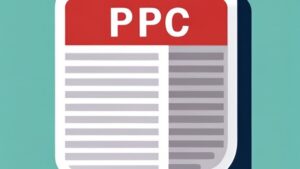In the competitive realm of personal injury attorney marketing, Conversion Rate Optimization (CRO) is vital. CRO refines your website to convert visitors into valuable clients. Enhancing conversion rates can secure more clients and improve your Return on Investment (ROI). This post explores CRO for personal injury attorneys, offering practical tips to optimize websites through law firm marketing services for higher conversions and bolstering online presence.
Understanding Conversion Rate Optimization
Conversion Rate Optimization (CRO) is a critical concept within marketing for personal injury attorneys. It’s all about systematically refining your website to increase the percentage of visitors who take specific actions, such as filling out contact forms or requesting consultations. In the digital landscape, where every click counts, CRO plays a pivotal role in turning passive website visitors into engaged clients. To grasp its significance, it’s vital to understand the conversion funnel, which represents the journey of a typical website visitor. This funnel consists of three key stages: awareness, consideration, and conversion. In the awareness stage, visitors become familiar with your law firm, possibly through online searches or referrals. During consideration, they evaluate your services against others. Finally, in the conversion stage, they decide to take action, whether it’s contacting your firm or seeking legal assistance. CRO strategies effectively target each of these stages, ensuring a smooth and persuasive journey that ultimately leads to valuable client conversions.
Identifying Conversion Goals
In the realm of marketing for personal injury attorneys, the importance of defining specific conversion goals for attorney websites cannot be overstated. These goals serve as the compass that guides your digital marketing efforts, providing a clear direction and measurable outcomes. For law firms, common conversion goals typically revolve around facilitating potential client interactions. This includes encouraging actions such as contact form submissions, phone calls, or appointment bookings. By pinpointing these objectives, personal injury attorneys can tailor their website content, design, and user experience to effectively steer visitors toward taking these vital steps, ultimately fostering meaningful connections and client acquisitions.
Website Analytics and Data Collection
In the realm of digital marketing for lawyers, harnessing the power of website analytics is a cornerstone of success. Tools like Google Analytics play a pivotal role in providing insights into how your attorney’s website is performing and where improvements can be made. First and foremost, setting up tracking for conversion goals is essential. This involves defining specific actions you want website visitors to take, such as submitting a contact form or requesting a consultation. By configuring goal tracking in Google Analytics, you can monitor the completion of these objectives. This data provides invaluable insights into which areas of your website are effective in driving conversions and where adjustments may be needed. Moreover, gathering actionable data is vital for refining your digital marketing strategies. By analyzing user behavior, traffic sources, and conversion paths, you can make informed decisions to enhance your website’s performance, optimize marketing campaigns, and ultimately drive more client acquisitions in the competitive landscape of law firm marketing services.
Analyzing User Behavior
Understanding user interaction with your attorney’s website is crucial in digital marketing for lawyers. It provides valuable insights into visitor preferences and helps identify areas for improvement. Heatmaps, session recordings, and user flow analysis are essential tools. Heatmaps visually display clicks, cursor movements, and time spent on your site. Session recordings offer a firsthand view of user actions. User flow analysis maps user paths, revealing drop-off points and engagement areas. These tools empower data-driven decision-making, enabling adjustments to enhance user experience and boost conversion rates in the competitive landscape of digital marketing for lawyers.
Optimizing Landing Pages
Landing pages hold paramount significance in Conversion Rate Optimization (CRO) efforts for digital marketing for lawyers. They are the gateways where potential clients make decisions to engage or leave.
To optimize landing pages effectively, consider the following tips:
Compelling Content: Craft clear and persuasive content that addresses visitors’ pain points and highlights your legal expertise.
Engaging Design: Create visually appealing pages with a clean layout, legible fonts, and eye-catching visuals that guide visitors to your desired action.
Strong CTAs: Place prominent and action-oriented calls to action (CTAs) strategically to encourage visitors to take the next step.
By honing these elements, you can create landing pages that not only capture attention but also drive conversions, ultimately boosting your attorney website’s effectiveness in acquiring clients.
A/B Testing and Experimentation
A/B testing is a powerful method for enhancing conversion rates in the realm of digital marketing for lawyers. It involves comparing two versions (A and B) of a webpage to determine which one performs better in terms of achieving conversion goals. To conduct A/B tests effectively, start by identifying specific elements on your attorney’s website that can be optimized. These may include headlines, forms, images, or even color schemes. Create variations of these elements, making only one change at a time. Then, randomly direct users to either version A or B and analyze the results. By systematically experimenting and refining your website based on A/B test findings, you can fine-tune your attorney website for maximum conversion efficiency, ensuring your digital marketing efforts yield the best possible results.
Improving Website Speed and Mobile Responsiveness
Website speed and mobile optimization are critical factors in the digital marketing landscape for lawyers. They directly impact user experience and, consequently, conversions. Slow-loading websites can frustrate visitors and lead to higher bounce rates. To optimize website speed, consider strategies such as image compression, leveraging browser caching, and minimizing HTTP requests. In the mobile-centric world, ensuring mobile responsiveness is equally vital. Mobile-friendly design and responsive layouts adapt seamlessly to various screen sizes, enhancing user experience. By prioritizing website speed and mobile optimization, law firms can create a smoother, more accessible online environment, fostering positive user experiences and ultimately boosting conversion rates in the competitive arena of digital marketing for lawyers.
Conclusion
Conversion Rate Optimization (CRO) for attorney websites is a vital component in the digital marketing landscape for lawyers. By understanding user behavior, setting conversion goals, and utilizing tools like analytics and A/B testing, law firms can enhance their online presence and drive more client acquisitions. In the digital age, CRO is an indispensable strategy for achieving success in the highly competitive legal industry.



